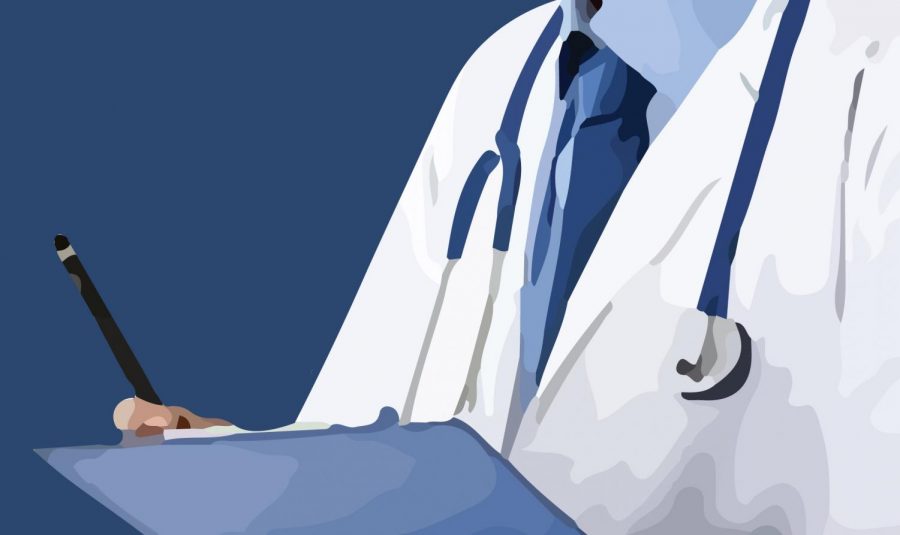Returning to campus post-COVID-19: concerns, preparations and visions for the future
May 8, 2020
On Monday, the University of North Alabama announced its phased approach to safely resume in-person classes for the fall 2020 semester.
Amidst the Covid-19 pandemic there are many questions as to how state institutions will re-open without endangering citizens.
UNA history professor, Dr. Julia Bernier, expressed concern about returning too soon and the danger it presents for students, staff and faculty, as well as the larger communities that each individual belongs to.
“I don’t think it’s an exaggeration to say that these institution’s decisions are life and death decisions,” Bernier said. “Every single person that comes to campus is a member of a larger community. We interact with the wage workers who have become the frontline of this.”
Bernier’s classes feature discussions and small group work for students to better understand the context of historical events, which presents a challenge in a socially distant classroom setting. Many professors and students alike have questions and concerns about what the classroom will look like during and after a pandemic.
However, UNA has a long way to go before bringing students back into a classroom.
Dr. Kimberly Greenway is the chair of UNA’s COVID Recovery Task Force, a 28-member team of staff and faculty who will work to evaluate the situation, advise President Kenneth Kitts based on their expertise in various fields and inform others of key findings and recommendations.
Each member was chosen by Kitts and endorsed by the university’s Shared Governance Executive Committee, which is responsible for overseeing the formation and regulation of on-campus committees. These members were selected as representatives in their areas of expertise.
The committee features representatives from every department, including student, academic, financial, legal and international affairs, as well as faculty and staff from food services, housing and residence life, admissions, athletics, diversity and inclusion, human resources, disability support and, of course, health services.
“This broad membership allows us to evaluate the situation and the potential effect of recommendations as a whole, as there are members from all divisions of the university,” Greenway said.
Several task force members aided in the university’s initial response to the COVID-19 outbreak and have served long-term on the University Safety and Emergency Preparedness Committee to further their qualification for the CRTF.
The phases for making a full recovery are as follows:
Phase One: Preparation of campus and staged return of employees to campus
Phase Two: Begin return of residential and other students to campus with some face-to-face courses
Phase Three: Resume normal internal academic and residential operations while following health and safety recommendations
Phase Four: Begin resuming events and external operations, and cost recovery
The first phase began initiation this week, as the campus facilities and grounds are being prepared for employees to gradually return. It is important to note that many employees have stayed on campus to manage housing, dining and maintenance for students who have remained on campus during remote instruction, but others who are working remotely will return soon.
The first to return to their desks will be supervisors who are tasked to ensure accommodations are met for the return of faculty and staff. These supervisors will then determine when each employee must physically return due to their position based on the requirements of their positions.
Originally, administrative professionals were to return by May 26, but after many expressed concern, Provost Ross Alexander extended working from home until July 6.
The second phase is focused on gradually returning students to campus, which will also occur in stages.
The third phase allows bringing in guests and resuming on-campus events. By the end of phase four, all normal operations of campus will resume. The timeline seems to only extend through phase two as of right now, as the safety of phases three and four will depend greatly on data received over the next few months.
As employees and students return, personal health and safety guidelines such as maintaining social distancing and wearing personal protective equipment will be enforced as directed by state orders, health agency recommendations and COVID-19 case data. The university purchased hand sanitizer and reusable masks that will be distributed.
“The situation is still fluid and could change based on Covid-19 data and state or federal guidelines,” Greenway said.
The CRTF and university administration continue to monitor the situation in real time as they initiate the implementation of these phases and all decisions regarding recovery. They are basing all decisions on the state of Alabama’s orders and guidelines, the federal and state health agencies’ guidelines, the number of COVID-19 cases and the spread of the virus on a local level.
As of May 8, there are four confirmed deaths attributed to COVID-19 in Lauderdale and Colbert counties and 130 confirmed infections.
“It is apparent that UNA administration has made the wellbeing of all students and employees a top priority,” said Dr. Vicki Pierce, dean of the Anderson college of Nursing and Health Professions.
Pierce is also concered with how the pandemic will impact training future healthcare professionals.
“I was a nursing student at UNA in the early 1980s when HIV infection was first discovered,” Pierce said. “During that time, nursing and medical schools did not teach the importance of wearing gloves for procedures with a risk of exposure to blood and body fluids. This quickly changed as more was learned about HIV infection.
“The first time I put on a pair of gloves to start an IV, my patient became offended, because of the stigma associated with HIV infection. So yes, I am sure that new nurse graduates and the general public will learn a great many new things because we have lived during the COVID-19 pandemic.”
The fall semester is expected to include the completion and use of Laura M. Harrison Hall, which has remained under construction during the two months that students have been mostly absent on campus. The capabilities provided by the new building will help prepare nursing students for the kind of clinical rotations that they may experience on the frontlines of COVID-19 or in similar situations.
Anderson College of Nursing prepared for a return to in-person learning by purchasing masks and no-touch thermometers, creating class schedules that allow for social distancing and planning ahead in case of further academic interruption.
Every individual interviewed for this article stated that their objective was the same: to provide the safest possible environment to work and learn in.
Continue to read the Flor-Ala for updates as these phases are implemented.












